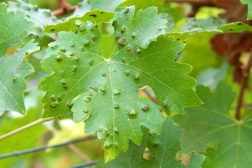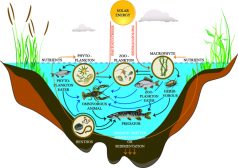Fluctuation test
(Science: investigation) test devised by Luria and Delbruck to determine whether genetic variation in a bacterial population arises spontaneously or adaptively. in the original version the statistical variance in the number of bacteriophage resistant cells in separate cultures of bacteriophage sensitive cells was compared with variance in replicate samples from bulk culture. The greater variance in the isolated populations indicates that mutation occurs spontaneously before challenge with phage. (The proportion of resistant cells depends upon when after isolation the mutation arises which will be very different in separate populations).
The fluctuation test shows that mutations occur randomly in a growing culture, and are not induced by the selection agent. The fluctuation test shows that mutations occur randomly in a growing culture, and are not induced by the selection agent. If mutations were induced, for example by streptomycin on the plates, all the plates would have approximately the same number of colonies. In contrast, if mutations occured randomly in the growing population, when the culture was subdivided some tubes contained a population of cells in which the mutation occurred early in the growth period, whereas in others it may have occurred late, or not at all. There will be many more colonies on the plate if the mutation arouse early during growth than if the mutation arouse late in the growth period because the mutants would have undergone more rounds of replication in the former case.If mutations were induced, for example by streptomycin on the plates, all the plates would have approximately the same number of colonies. In contrast, if mutations occured randomly in the growing population, when the culture was subdivided some tubes contained a population of cells in which the mutation occurred early in the growth period, whereas in others it may have occurred late, or not at all. There will be many more colonies on the plate if the mutation arouse early during growth than if the mutation arouse late in the growth period because the mutants would have undergone more rounds of replication in the former case.
Dictionary > Fluctuation test
You will also like...

Plant Cell Defense
Plants protect themselves by releasing hydrogen peroxide to fight against fungal invasion. Another way is by secreting c..

Leaves
Leaves are the major photosynthetic organ of a plant. Apart from that, they are also crucial to water movement. In this ..

Muscle
Muscle cells are specialized to generate force and movement. Learn about the different types of muscle tissues in this t..

Still Water Animals
Animals living in aquatic habitats have diversified and evolved through time. They eventually occupy ecological niches a..

The Homo Species
The evolution of the species of the genus "Homo" led to the emergence of modern humans. Find out more about human evolut..

Freshwater Producers and Consumers
Freshwater ecosystem is comprised of four major constituents, namely elements and compounds, plants, consumers, and deco..

